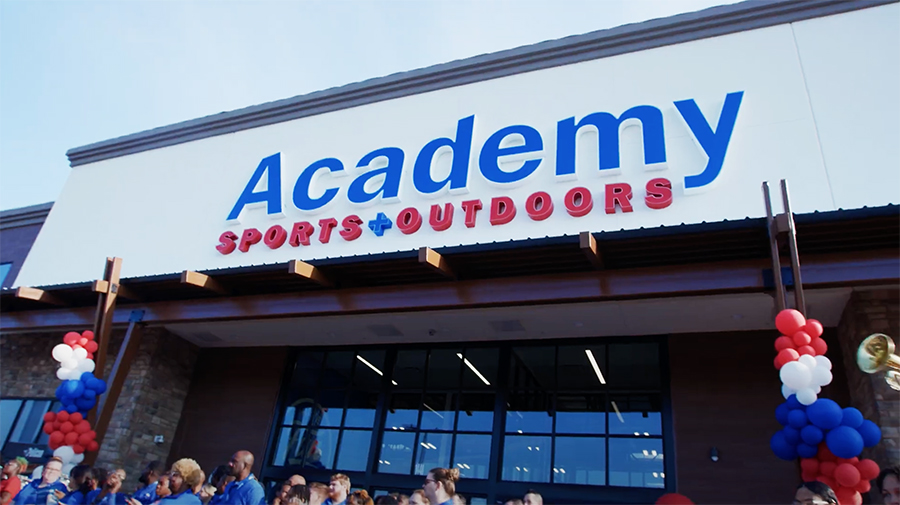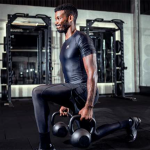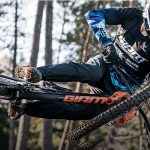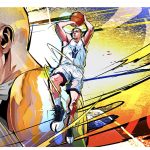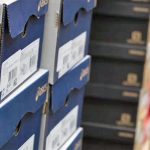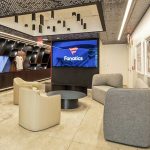Shares of Academy Sports and Outdoors, Inc. rallied 14 percent on Tuesday after the sporting goods chain reported second-quarter earnings that topped Wall Street’s consensus estimates on strength in sports & recreation and improved merchandise margins. Academy officials reiterated its guidance for the year as the retailer’s momentum continues.
Shares rose $5.88 to $$47.81 on the New York Stock Exchange.
“The quarter presented similar macroeconomic challenges as the first quarter, and the team demonstrated once again their ability to perform in a tough environment,” said Ken Hicks, chairman, president and CEO, on a call with analysts.
Hicks said results were in line with expectations, and the business continues to substantially outperform pre-pandemic levels of sales and profits.
“Our best customers have remained resilient throughout the challenging economic environment while our value offering continues to resonate. We expect the sales trend compared to 2019 to hold for the remainder of 2022,” said Hicks.
Sales Climb 36 Percent Against Q219
In the quarter that ended July 30, sales were $1.69 billion, a decrease of 5.8 percent and in line with Wall Street’s consensus estimate of $1.7 billion. Comps declined 6.0 percent due to fewer transactions this quarter against the year-ago period but partially offset by an increase in average tickets driven by higher unit prices.
Academy said it continues to benchmark its performance against 2019, which was the last normalized year before the pandemic.
Compared to the second quarter of 2019, sales rose 36 percent, consistent with the 36 percent growth in the first quarter.
E-commerce sales grew 12.1 percent year-over-year and 244.5 percent compared to 2019. Online marked its fourth consecutive quarter of double-digit sales growth, increasing to 10 percent of sales in the second quarter from 8.4 percent in Q221 and 3.8 percent in Q219.
Sports & Recreation Pace Sales
While each of Academy’s four merchandise divisions—Sports & Recreation, Footwear, Apparel, and Outdoors—saw a decrease in year-over-year sales, each grew by at least 20 percent compared to Q219. Sports & Recreation and Outdoors each increased by more than 45 percent over 2019.
Sports & Recreation sales were down 2.5 percent versus 2021 but up 47 percent versus 2019.
Steve Lawrence, EVP and chief merchandising officer, said the team sports business “continued to be extremely strong,” with football, golf, baseball, and soccer all key contributors. Strength also came in some recreation categories, including watersports and outdoor furniture.
Fitness remains the most challenging category in the sports & recreation segment after a run-up as consumers worked out more from home in the early stages of the pandemic, but has since stabilized over the past several quarters at over a 30 percent increase versus 2019 pre-pandemic levels.
The footwear division was the second-best category, down 4 percent versus last year but up 22 percent versus 2019. Tied to the team sports strength within the sports & recreation category, continued strength came in its team sports cleated business, where demand continues to outpace supply.
Other bright spots included kid’s shoes and several major brands, including Crocs, Skechers, Adidas, and Puma, running increases for the quarter. The Hey Dude brand was introduced to all its stores in July with strong early results.
Apparel sales were down 6 percent versus last year but were up 29 percent versus 2019. Receipts and inventory levels steadily improved over the course of the quarter. Outdoor and licensed apparel led the way. Athletic apparel was softer, primarily due to not having enough lightweight tops and shorts in inventory as the quarter started. Said Lawrence, “We did see the trend improve, and as we turn the corner into back-to-school selling season, we believe our inventories are better balanced and well positioned to drive sales in the back half of the year.”
The outdoor category was down 9 percent versus last year but up 46 percent versus 2019. Camping was the retailer’s strongest business, running a positive comp for the quarter. The hunt and field & stream businesses were both down versus last year, but in aggregate continue to run well above 2019 levels. Inventory and in-stocks are maintained at much higher levels versus the past couple of years, although not back to pre-pandemic levels. Lawrence said, “We believe our improved inventory position in both these categories positions us to take advantage of the upcoming earning season along with the holiday gift shopping opportunity.”
Merchandise Margins Improve
Gross margins eroded 60 basis points to 35.3 percent year-over-year as an increase in e-commerce shipping and higher freight costs were partially offset by increased merchandise margins. When compared to 2019, the gross margin rate expanded by 420 basis points.
Lawrence said, “Beneath the surface, our merchandise margin was up 20 basis points versus last year, which was the same increase we ran in Q1. All the hard work the teams have done over the past couple of years around approved buying and planning and allocation disciplines have allowed us to absorb the uptick in promotions during Q2 while still seeing increases in our merchandise margins.”
SG&A expenses were 20.1 percent of sales, a 160 basis point decrease, due to non-recurring stock compensation and payroll expenses associated with the accelerated share vesting, which occurred in the second quarter of 2021. Excluding this non-recurring expense of $40.3 million, SG&A expenses increased 70 basis points compared to last year, primarily due to fixed cost deleverage.
Operating income for the quarter was 15.2 percent of sales or $256.7 million, flat to last year or 43 percent higher than all of fiscal year 2019.
GAAP net income decreased 0.9 percent to $188.8 million compared to $190.5 million, although EPS increased 11.6 percent to $2.22 from $1.99 as Academy reduced its share count to 84.9 million from 95.9 million in the prior year’s quarter.
On an adjusted basis, which excludes the impact of certain non-cash and extraordinary items, was $195.0 million, the second most profitable quarter in Academy’s history. EPS on an adjusted basis was $2.30 compared to $2.34 per share a year ago and ahead of Wall Street’s consensus estimate of $2.08.
Outlook Maintained
Looking ahead, Academy reiterated its guidance for sales and operating earnings while increasing its EPS guidance due to a lower share count.
The updated guidance calls for
- sales to continue to be in the range of 6,430.0 million and $6,630.0 million;
- comparable-store sales to continue to be in the range of negative 6.0 percent to negative 3.0 percent;
- gross margins to continue to be between 33.0 percent and 33.5 percent;
- GAAP income before taxes to continue to be between $725.0 million and $805.0 million;
- GAAP net income to continue to be in the range of $550.0 million and $615.0 million;
- GAAP EPS in the range of $6.50 to $7.25, up from previous guidance between $6.30 and $7.00;
- adjusted EPS between $6.75 and $7.50, up from previous guidance of $6.55 and $7.25; and
- diluted weighted average common shares outstanding to be about 85.0 million, down from $88 million previously.
Academy expects the second half of the year to be more promotional than the first half, and the guidance accounts for increased discounting. Lawrence said, “That said, we expect to maintain most of the margin gains for the past couple of years, and we’re confident that our everyday value pricing, coupled with our promotional strategy, makes us very competitive and allows us to maintain our position as the value leader in our space.”
Inventories ended the second quarter up 17 percent versus last year. Versus the same time in 2019, inventory was up 8 percent in dollars and down 12 percent in units.
Lawrence said an increase in bigger ticket hard goods categories as part of its inventory and sales mix largely drives the difference between inventory dollars and units. The outdoors and sports & recreation categories have grown to 53 percent of the business this year compared to 49 percent of total sales in 2019. The variance also reflects the expansion over time of the best offerings in assortments, along with some cost inflation.
“Heading into the back half of the year, our inventories are much better balanced across various businesses with in-stock improvements across every category,” said Lawrence. “Additionally, the overall quality of our inventory is in a much better position this year in many of the key brands that we ran late in last year, such as Nike, Adidas, Under Armour, and Yeti.”
He said fall holiday receipts last year for many major brands arrived 30 days to 90 days later than typically planned. Said Lawrence, “We moved the initial sets for these businesses back to the traditional timeframes. When you walk our stores, you will see that we’re ready to take advantage of the natural fall traffic that will come in shopping for hunting and tailgating along with cold-weather categories such as outerwear, fleece and fire pits.”
Beyond improved inventories, sales drivers in the second half are expected to be new brands, including the benefit of the Hey Dude addition on back-to-school selling, Solo Stove fire pits and the SplatRBall water gun boosted by the craze on TikTok.
A collaboration between Shiner Bock beer and Academy’s Magellan Outdoors line that includes apparel, coolers, koozies, fishing gear, outdoor games, grill accessories, and a canopy has sold “extremely well” in the first few weeks on the floor, and more collaborations are planned. Lawrence said, “We believe building collaborations with brands that resonate with the sports and outdoors consumer can be a traffic drive initiative that we add to our playbook moving forward.”
Lawrence said Academy would be in “a much better inventory position across virtually every category” throughout fall and heading into the holiday to drive top-line growth.
“Our everyday value offering, when coupled with the softer promotional cadence on key seasonal categories, continues to set us apart from our competition and reinforce our position as the value leader in our categories,” said Lawrence. “We also believe that more controlled distribution by key vendor partners will continue to be a tailwind for us by funneling shoppers looking for the best national brands in sports and outdoors into our stores.”
On marketing, Lawrence noted that a shift to more digitally-targeted advertising while reducing reliance on traditional broadcast and print continues to improve Academy’s overall marketing reach and effectiveness. Lawrence concluded, “In closing, we believe that we have the proper strategies in place and are well-positioned to drive the business and pick up market share during the remainder of the year.”
Photo courtesy Academy Sports + Outdoors

